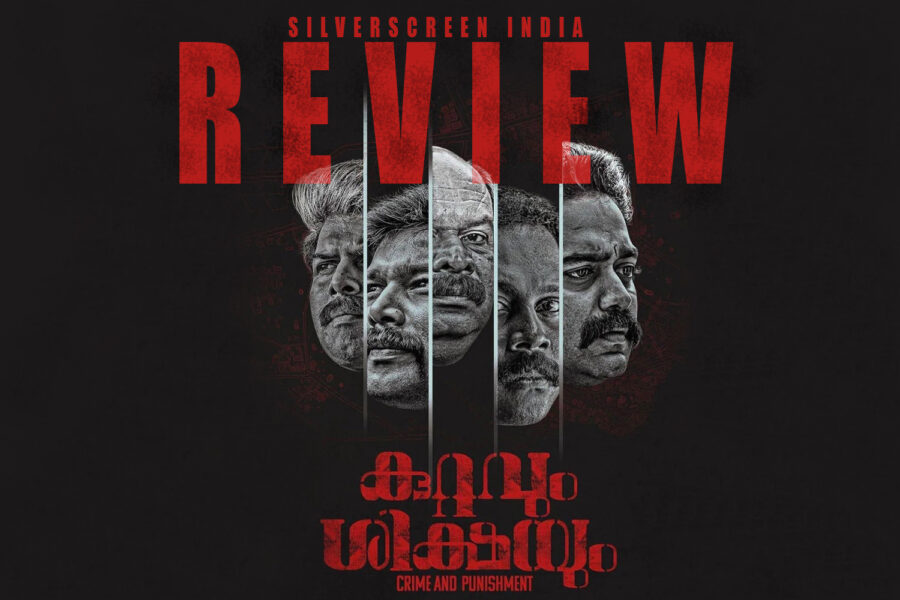Everything runs in circles in Kuttavum Shikshayum (Crime and Punishment), directed by cinematographer-filmmaker Rajeev Ravi. Halfway through the film, the Malayali police inspector Sajan Philip (Asif Ali) and his team members, played by Alencier, Sharaf U Dheen, Senthil Krishna and Sunny Wayne, enter a North Indian village, looking for a bunch of thieves who robbed a jewellery shop in Idukki. As they walk around, the space takes the shape of a maze where people, houses, animals and lanes look like copies of one another. A clay-coloured garden of clones. The camera follows the characters like an apparition shadowing an unsuspecting human being, breathing down behind their necks. The scene conveys the absolute loss of control Sajan feels in these new surroundings. He is like a fish out of the water, terrified of the unknown.
Their journey from Kerala to Uttar Pradesh is compressed into a fascinating montage. Shots of goods trains and those carrying hundreds of passengers storming past their windows. Shots of bridges and arid desert landscapes. The images are eerily alike, sans any sign that marks the time and place.
This monotony also denotes the nature of Sajan’s job. He is in constant motion, from one case to another, from one crime scene to another, losing his sense of right and wrong in the process.
Kuttavum Shikshayum must be the most unusual Rajeev Ravi film yet, and amusingly, the closest to the kind of cinema he describes as his own in interviews. A police drama without a great storyline or dramatic twists and turns. His filmmaking is characterised by an element of randomness, a rejection of order. Sometimes the actors’ lines overlap as though there was no clear-cut dialogue in the first place. The supporting actors look like they were picked right from the filming location. The interior of the hotel rooms and police stations are aptly shabby. The North Indian landscape the film shifts to in the latter half is not typically picturesque but boundlessly plain. But this vérité style flounders in several parts, leading to technical discrepancies and rough edges. The performance of the supporting cast in the second half and the sound design leave much to be desired. The staging of scenes and transitions are absurdly flat in several parts, evoking indifference rather than curiosity.
For the most part, the film ducks the personal and sticks to the procedural. Its emphasis is not on the character backstories or the emotional elements but on the unkind masculine landscape where the characters operate. Before the title appears on the screen, two crimes happen. A murder and a robbery. The first incident is brilliantly staged, like a hunting game filmed from the perspective of the gun-wielding predator. From the wide shot of a stone-pelting mob storming towards the police force, Rajeev cuts to dramatic close-ups of a cop and an activist. One is mired in anxiety while the other in revolutionary zeal. The unfounded fear of the armed man contrasted against the fearlessness of the unarmed. In a later instance, a policeman leaps from the background to hit a suspect who talked back to his superior officer. Why do the cops feel threatened and enraged by the slightest show of boldness by a civilian? It seems less personal and more symptomatic of the hierarchy in the police system and the power dynamics in society.
Kuttavum Shikshayum, like Nayattu (2021), is written by a policeman, Sibi Thomas (co-written with Sreejith Divakaran). If Nayattu’s writer Shahi Kabeer cast himself as a hapless victim, Thomas’ work is brutally self-critical. He interprets cruelty as the sign of a pandemic. Sajan’s monologue close to the climax comes across as a contrived insertion into an otherwise seamless narrative, but in close-up shots in the early scenes, his eyes quietly speak of a history of trauma (Asif Ali delivers a powerful performance), undiagnosed and untreated, left to spread like cancer.
However, the film’s quasi cheerful final scene negates this interpretation.
Kuttavum Shikshayum, like Annayum Rasoolum and Kammattipadam, unfurls in an exclusively male terrain where the female presence is almost always a disruption. The cops, in the early part of the film, dive into the underbelly of the highland town of Kattappana to meet the people who make up that world. They look threatened for the first time when they encounter the bold young wife of a suspect (Srinda) determined to protect her husband. Interestingly, the cops experience a similar shock again when an angry mob of women in colourful veils interrupt their inspection in the North Indian village. The women are encoded anomalies, but Rajeev knows his men. In a scene post the interval, one of the men breaks down in tears, a rare exhibition of vulnerability in a cop drama. The men propel from one phase of the investigation to the next, fuelled by nothing but a sense of duty, like well-oiled machines.
Recommended
Kuttavum Shikshayum is an easy title, a catchy one at that. Contrary to what it suggests, the film does not raise existential questions or dwell on the rot in the law and order system. In the end, Rajeev stands his viewers up, hastily winding up the narrative without offering them a follow-up to the case. Yet, despite these flaws, Kuttavum Shikshayum is, strangely, a gripping film. Rajeev employs the mechanics of a conventional horror drama to reasonable success. You watch with bated breath as the protagonists venture into a dark, mysterious world and wait for it to explode. The blast never happens, but the pleasures that the wait offers seem gratifying enough.
*****
This Kuttavum Shikshayum review is a Silverscreen original article. It was not paid for or commissioned by anyone associated with the movie. Silverscreen.in and its writers do not have any commercial relationship with movies that are reviewed on the site.



